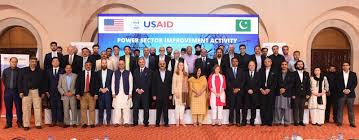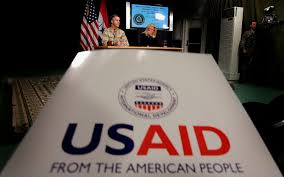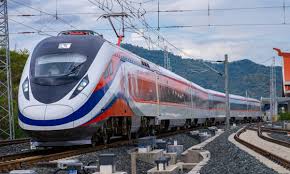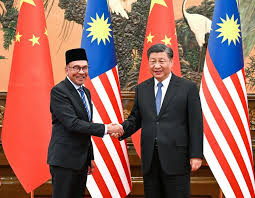USAID spends millions on Pak connectivity projects

Celina Ali
Islamabad: Pakistan is a country that has a vast variety of goods and services to offer, especially to the international market, and even within the country. Inter-regional trade and exchange of goods and services has always been an area that Pakistan needed to improve, to enhance the economic growth and connectivity with other countries. A stable and viable infrastructure is one of the key factors to effortless trading, providing various benefits like timely deliveries and stress-free long-distance transportation. The United States Agency for International Development (USAID) has pinpointed this issue and has made many contributions to improving regional trade and connectivity. USAID played a pivotal role in developing infrastructure, especially in regions like Khyber Pakhtunkhwa (KPK) and Federally Administered Tribal Area (FATA), which are already victims of political instability and inaccessibility. USAID made this possible by funding innumerable developmental infrastructure projects within Pakistan, especially connecting to inaccessible regions. Amongst the most important infrastructure achievements under USAID’s name in Pakistan include the Peshawar Torkham Road, the Jamrud Bypass, the DIK-Hathala Road, and the KQC Highway. USAID’s support and guidance enabled locals to access far-away areas and improve the trade, economy, and links within regions.

Peshawar-Torkham Road: One of the central infrastructure projects supported by USAID is the Peshawar-Torkham Road, which stretches up to 46 kilometers, linking Peshawar in Pakistan to Torkham on the Pakistan-Afghanistan border. The Peshawar Torkham road, has major contributions to trade within the two regions and links South Asia to Central Asia, creating a crucial trade corridor that promotes regional trade.
Before USAID’s intervention, the road existed in its battered state and was of little use in transporting goods and services. It posed various problems in the link between the regions and greatly affected the economic relations of the neighboring regions. However, USAID’s support ensured the restructuring of the entire project and expanded the route. In 2012, USAID contributed to widening the road, expanding its reach, restoring the drainage system, and making it safer to travel for individuals and goods alike, making it a vital link for cross-border trade.
Jamrud Bypass: The Jamrud Bypass, a 14-kilometer-long road, is one of many structures USAID has facilitated. The Jamrud Bypass, originally located near the Khyber Pass was constructed mainly to divert the heavy traffic and avoid jams in the crowded and congested Jamrud Area. The main purpose of designing the bypass was to relieve the choked route connecting Pakistan to Afghanistan, by diverting the trade vehicles to a different course. The construction of the bypass has majorly improved the congestion and blockage problems in the already narrow alleys, speeding up the transportation of goods and improving the quality of life of the fed-up locals. Not only has it benefited trade, but it has also improved business for the locals and shop owners on the original route. The bypass has diverted the rush away from residential zones and reduced the travel time by 50%, courtesy of USAID’s foresight and support. USAID’s contribution in developing this infrastructure has made life easy for many locals in the Jamrud area and has relieved the strain on the road that was a major bottleneck to the trade link between Pakistan and Afghanistan.
DIK-Hathala Road: USAID funded the development of the DIK-Hathala Road, in southern KPK, which is an 80-kilometer road connecting Dera Ismail Khan to Hathala, which is the center of all the agricultural activities within the region. Before USAID’s involvement, local farmers faced hurdles in transporting their produce to the main markets, leading to unsatisfactory agricultural performance and earnings. The dilapidated roads caused major delays in the transfer of produce, and the farmers were forced to sell their rotten goods at lower prices. However, courtesy of their funding, USAID was able to develop the DIK-Hathala road that provided a clear, accessible, and all-weather route for the farmers to transport their freshest produce to the marketplaces. The development helped stir the economy and improved the transportation of goods to local and national marketplaces. It also increased access to educational and healthcare facilities in areas that were previously deprived of basic amenities. USAID’s contribution in developing the DIK-Hathala has opened new gateways to success for local farmers and will have many long-term benefits to the national economy.
KQC Highway: The Kalat-Quetta-Chaman (KQC) Highway, a crucial segment of Pakistan’s National Highway (N-25), spans 231 kilometers and connects Kalat city to Chaman, a key border town near Afghanistan. This highway serves as a vital artery for sub-regional connectivity and the facilitation of cross-border trade between Pakistan, Afghanistan, Iran, and the Central Asian Republics. It traverses five districts of central and northern Balochistan—Kalat, Mastung, Quetta, Pishin, and Qila Abdullah—crossing through historically significant points like the Khojak Pass and Sheila Bagh, known for their rugged mountainous terrain and snow-covered winters.
The United States, through the U.S. Agency for International Development (USAID), has played a significant role in enhancing Pakistan’s infrastructure by funding critical road and highway projects. USAID financed the construction of 111 kilometers of the highway, which included widening sections of the road, earthwork, grading, and paving. Additionally, the project involved the construction of bridges, culverts, drains, and retaining structures to ensure safe and efficient passage along this vital trade route.
The rehabilitation of the KQC Highway significantly improves transportation infrastructure in Balochistan, promoting economic integration, cross-border commerce, and access to essential services for the region’s communities.
In essence, USAID’s contributions and interventions to improve the educational, healthcare, and infrastructural facilities in Pakistan boils down to the overall development of the country as a whole. The surmounting favors of USAID has helped Pakistan to stand tall and make a name for itself globally, by offering speedy development and growth in all aspects.





